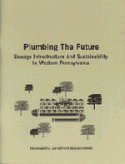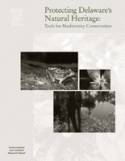
Research Reports
ELI publishes Research Reports available for free download that present the analysis and conclusions of the policy studies ELI undertakes to improve environmental law and policy. These reports contribute to education of the profession and disseminate diverse points of view and opinions to stimulate a robust and creative exchange of ideas. Those publications, which express opinions of the authors and not necessarily those of the Institute, its Board of Directors, or funding organizations, exemplify ELI’s commitment to dialogue with all sectors.This report discusses issues surrounding the use of uranium mill tailings in water lines sewer lines and construction sites, in Grand Junction Colorado. This study analyzes the impacts of institutional controls established in the Uranium Mill Tailings Radiation Control Act (UMTRCA) of 1978. It specifically looks at the statutory requirement of annotation of land records and the voluntary nature of the UMTRA programs.
Read More >
This report discusses the relationship between sewage infrastructure decisions in southwestern Pennsylvania and effects on the urban, suburban, and rural landscape of the region. The study examines ways in which laws and policies relating to sewage infrastructure investment affect four objectives.
Read More >
This report focuses on how Delaware’s legal, policy, and management tools can be improved and used to protect and restore its biological diversity.
Read More >This report focuses on how Delaware’s legal, policy, and management tools can be improved and used to protect and restore its biological diversity.
Read More >
Despite the increasing use of institutional controls at Superfund sites, there has been little analysis to date of the effectiveness of these controls in practice. This report investigates the effectiveness of institutional controls at four NPL sites. The Environmental Law Institute researched and analyzed the administrative, legal, economic, public health, and policy implications of using institutional controls to prevent exposure to residual hazardous substances.
Read More >